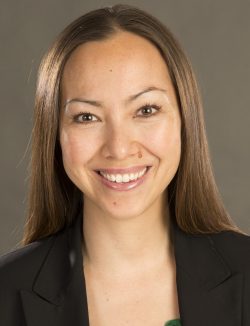Women in Leadership
New Study Shows Just How Significantly Underrepresented Women Are in Insurance Leadership Roles

While organizations such as Lloyd’s of London, Progressive Insurance and Anthem have elected female CEOs in recent years, women remain largely underrepresented in leadership roles in the insurance industry.
At a time when the labor market is tightening, experts say insurers could improve their workforce by paying closer attention to their female ranks and the potential for women leadership in insurance.
However, unconscious bias, a lack of work-life balance and fear of risk-taking can all negatively impact a woman’s ability to climb the ladder. Yet through workforce education, formal sponsorship and mentorship programs, the insurance industry can help foster a culture that reduces the gender gap and more adequately represents the potential women have in leadership roles.
Women Underrepresented in Senior Management and C-Suite
A new report by McKinsey & Company, “Closing the Gap: Leadership Perspectives on Promoting Women in Financial Services,” surveyed 12 female executives and more than 14,000 employees at nearly 40 financial services companies.
It found while women outnumber men at entry-level positions in the insurance industry, their representation of the workforce is significantly smaller near the top of the organizational chart. Women represent 56 percent of entry-level positions, but only 30 percent of the vice presidents and 18 percent of the C-suite.
It’s not only an issue of equality and fairness but one that impacts the ability to find and retain the best talent, said Kwelin Ellingrud, senior partner at McKinsey & Company. Women receive 57 percent of college degrees today in the U.S., and those without a fair share of women at all levels of the organization could be putting themselves at a disadvantage, Ellingrud said.
“This is particularly true in today’s very competitive talent environment with low unemployment rates and lots of competition for skillsets such as analytics and digital,” Ellingrud explained.
Subconscious bias remains in much of the business world, including the insurance industry, said Elizabeth Myatt, chair of the IICH Women in Insurance Conference Series. Traditional stereotypes of women assume they do not possess leadership characteristics often attributed to men.
“People in hiring positions and with power to promote often don’t realize they are focused on stereotypes,” Myatt said. “Both men and women are guilty of unconscious bias and do not picture women in leadership roles as readily as they do men.”
McKinsey noted entry-level women in financial services are 24 percent less likely than their male peers to be promoted.
The lack of women in higher leadership positions can also perpetuate the problem and inhibit the ambition of others in the industry, said Deanna Strable, executive vice president and CFO at principal in the McKinsey report.
“Because we don’t have females in the C-suite, young women don’t see role models or potential paths towards executive-level leadership and are more likely to de-select themselves out of higher-level leadership roles,” Strable added.
Fostering Equality
Insurers that are most effective in driving gender equality are those that execute initiatives and drive accountability from the CEO and senior leadership team, Ellingrud said.
McKinsey noted there were three fundamental building blocks for success for women that rose the ranks in the financial services industry: 1) They build a strong network of sponsors; 2) They took risks early and often; 3) And they knew how to communicate their value.
Insurers can also take several practical and easy-to-implement measures to support upward mobility for women in their organizations. One is to enhance the quality of and access to sponsorship with formal programs, said Angie Ribuffo, president of Women in Financial Services.
“When they are in senior leadership, they need to look down and see the potential from other women and they need to pull up. They can recruit women but if they don’t give them support or development, they can’t keep them,” Ribuffo said.
McKinsey found less than half of the financial services companies it surveyed had sponsorship programs, and only 58 percent had formal mentorship programs. The 2017 Women in the Workplace research revealed women who received advice from senior leaders on career advancement are more likely to be promoted.
Insurers can also reduce bias in reviews and promotions by better educating their management on the matter.
Company-facilitated resources, such as workshops and roundtables, can also offer tools that enable women to advance and attain greater representation in the ranks.
“Companies must educate and make their employees aware of these biases and how they can influence decisions – and ultimately affect whether a fully inclusive and gender equal workforce is attained,” Myatt said.
Juggling family and work remains one of the primary reasons senior women don’t strive to become a top executive. Insurers musts not only offer flexibility but encourage them to take advantage of it, said McKinsey. Forty-four percent of women surveyed said participating in a flexible work schedule would negatively affect their career, compared to 36 percent of men.
Finally, organizations can also build accountability through target setting and measurement. McKinsey found that only 11 percent of financial services companies set targets for gender representation in promotions, lower than the 18 percent rate for companies across all industries.
McKinsey said financial services firms could push further by consistently setting targets for female representation and promotion rates and by holding leaders accountable.
“Evaluations for promotion must also have clear criteria that are reviewed frequently, and cultures must evolve to be open to employees reporting compensation and other issues related to biases,” Myatt said. &












